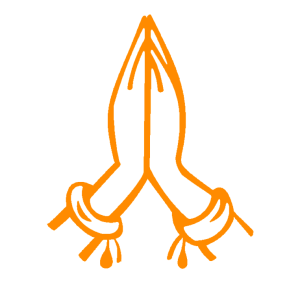


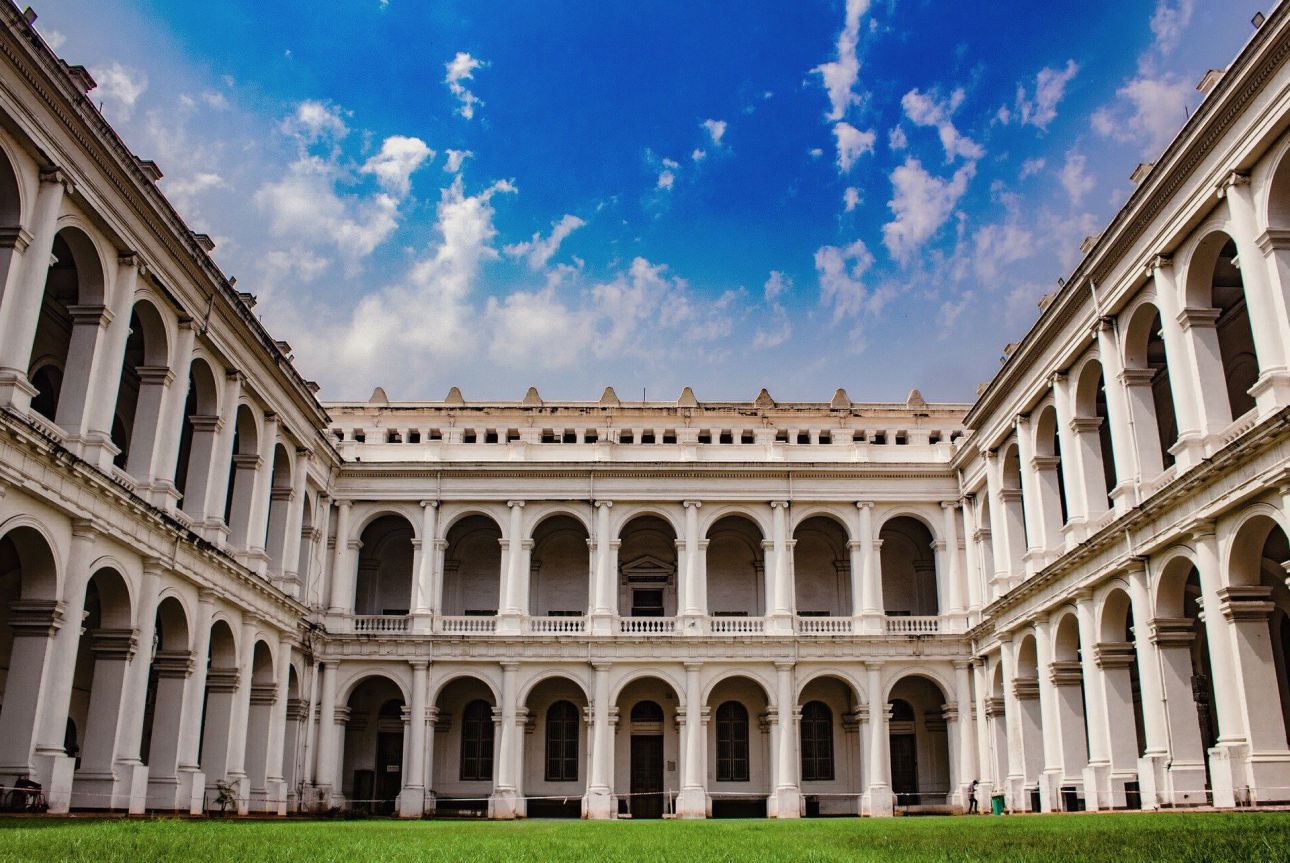
Arrive Kolkata by an international flight. After clearing immigration and customs formalities you are met by a representative from First Tours India and transferred to The Oberoi Grand, a centrally located luxury hotel characterized by its Victorian architecture. Fondly referred to as the Grand Dame of Chowringhee, The Oberoi Grand has been an icon on the landscape of Kolkata for more than a century. Formerly known as Calcutta, Kolkata was the showpiece capital of British India in 19th century during the heyday of the Raj. This greatest colonial city of Orient located on the east bank of River Hooghly was established by English merchant trader Job Charnock in 1690
The Oberoi Grand

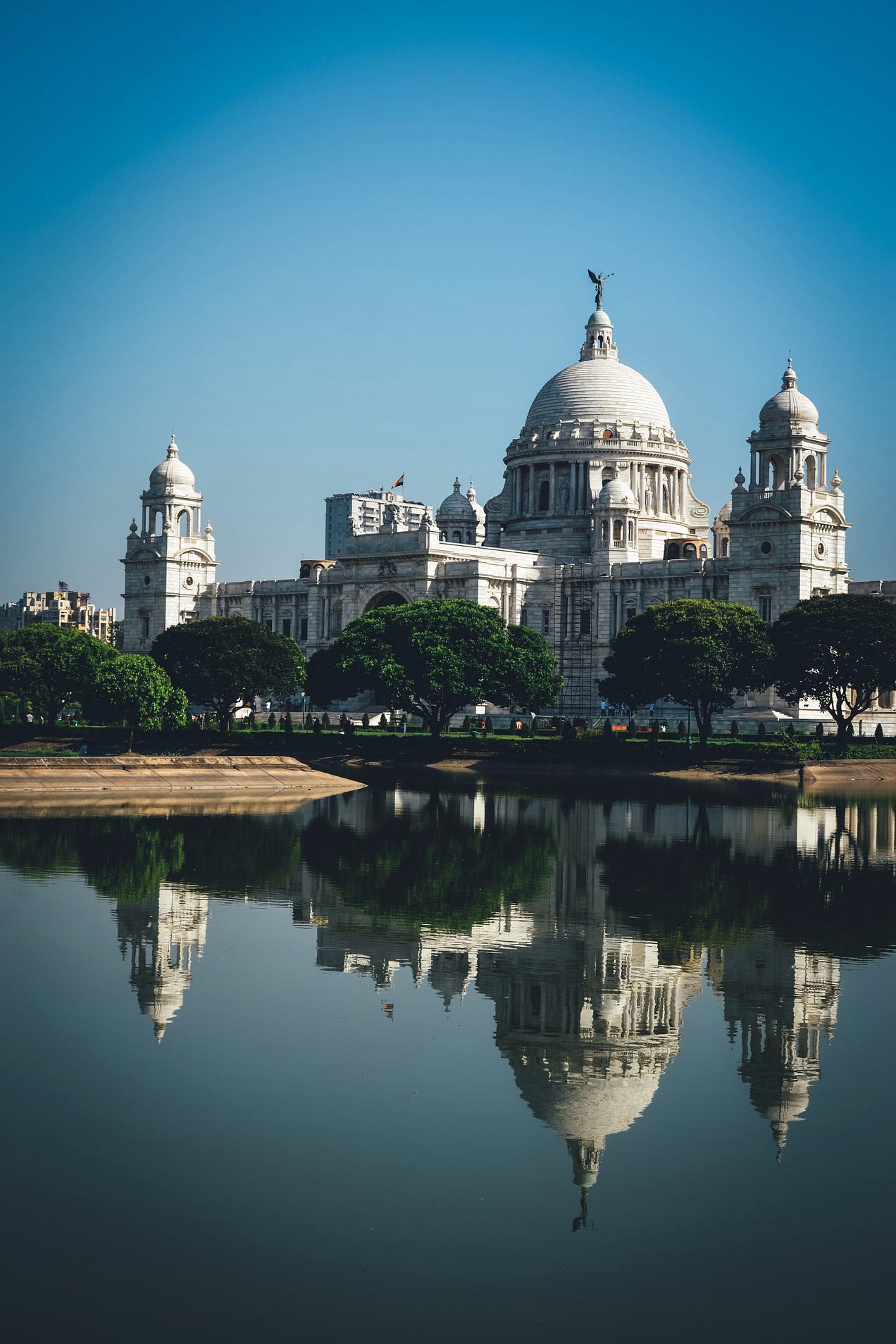
Begin the day with a visit to the flower market and wrestling grounds on the banks of Hooghly River. Stop at the giant Howrah Bridge – an airy, elegant mesh of steel that appears to float above the turgid Hooghly River. Visit the Writers Building, General Post Office, Raj Bhawan, Calcutta High Court and the Town Hall at Dalhousie Square. Drive on to St. John’s Church, the first parish church in Kolkata. It boasts an impressive stained-glass panel of The Last Supper, in which the artist Johann Zoffany gave the 12 disciples the faces of British personalities famous in the city at that time. Proceed towards Park Street to visit Mother House, the headquarters of Missionary of Charity and the final resting place of Mother Teresa and Sishu Bhawan Orphanage. Enjoy refreshment break at local restaurant. In the afternoon drive towards the northern part of Kolkata that houses the old buildings belonging of the landlords and other rich Bengalis who used to trade with the British. Visit the Indian Coffee House at College Street. It is the favourite haunt of the city’s intelligentsia since it opened in 1942. Visit Kumartuli or “the Area of the Potters”, where images of various Hindu gods and goddesses are made. End the day with a visit to Paresnath Jain temple.

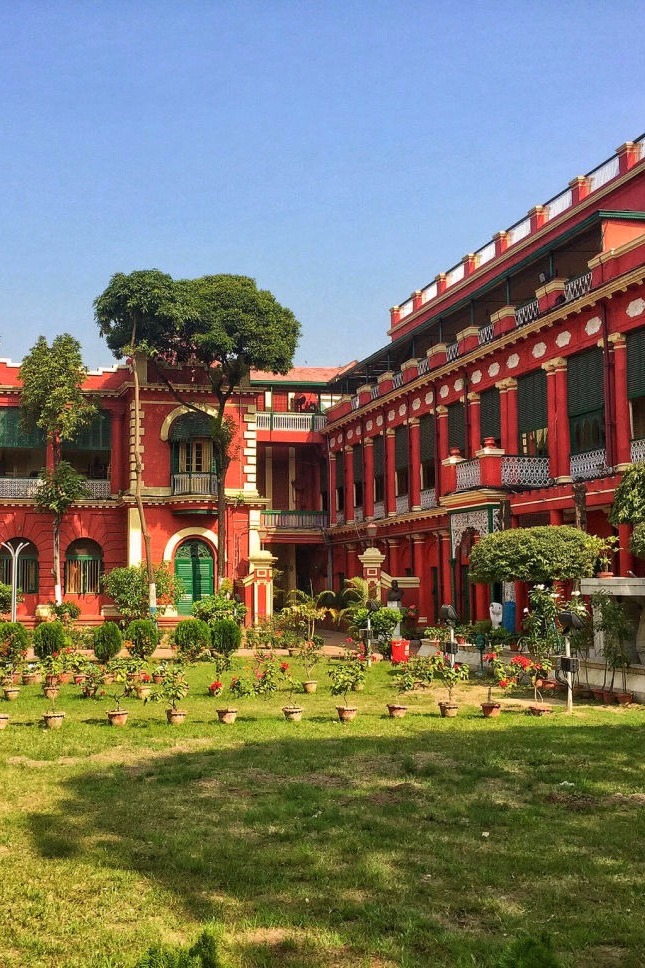
Enjoy sightseeing this morning visiting Victoria Memorial, the city's most celebrated landmark conceived by Lord Curzon, one of British India's most flamboyant viceroys to commemorate the British Empire at its peak. The building was designed by Sir William Emerson and the main attraction is the huge statue of the Queen, which is flanked by two ornamental tanks. Also visit the oldest and largest museum in India, the Indian Museum, founded in 1814. The imposing building designed by Walter Granville is noted for its impressive collection of artifacts from the 2,500 BC Indus Valley Civilization, sculpture from Gandhara, the superbly sculpted railings from the 2,000-year old Bharhut Stupa and a fine collection of 5th century Gupta coins. In the afternoon visit the opulent Marble Palace, a Palladian mansion built in 1835 and the Rabindra Bharati University & Museum. The museum houses the life and works of Rabindranath Tagore, who won the Nobel Prize for Literature in 1913. It also houses a fine collection of Indian style, western style, Anglo-Indian school, traditional schools of Bengal district and Bazar paintings. There is a little bit of everything- furniture, utensils, craft and sculpture, records, photographs and archival documents that reflect to visitors how the Tagore family lived.

Fly to Bhubaneswar and transfer to Trident Bhubaneshwar. Set amidst 14 acres of lush gardens and fruit orchards, the interiors of the hotel are inspired by the distinct traditional temple architecture of Odisha. Bhubaneshwar, the capital of ancient Kalinga is now a bustling centre for commerce and religious activity. It became the modern capital of the state of Odisha in 1948. Bhubaneshwar is famous for its superb Hindu temples. Most of these are in the older southern part of the city. The temples date from the 7th to the 13th centuries, a period which saw the waning of Buddhism and a revival of Hinduism under the successive dynasties that ruled Odisha, reflects the grandeur of high-quality workmanship and constitute one of the most distinctive regional styles of religious architecture in South Asia. Most of the temples have two main components – a convex curvilinear spire call deul or sikhara which towers over the sanctum; and an entrance porch called jagamohana with a stepped pyramidal roof. More than 400 temples remain of the 7,000 that said to have once embellished Bhubaneshwar earning it the title, the “City of Temples”. Today visit the Lingaraj temple, the Parsurameswar temple, the Mukteswar temple and the Rajarani temple.
Trident Bhubaneswar

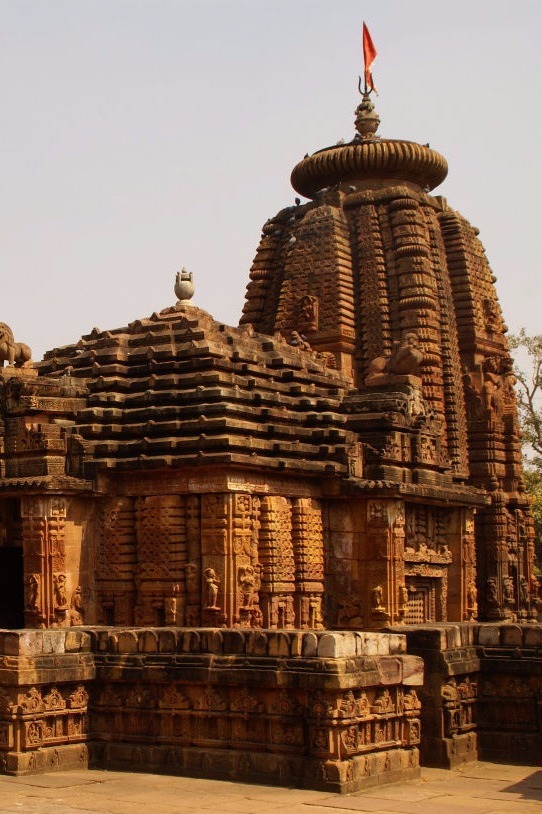
Early morning drive though lush green palm grooves and paddy fields to Raghurajpur, a village of artists who produce traditional Odisha painted works on specially prepared cloth called Patta Chitra and incised palm-leaf manuscripts called Tala Patra. Visit few artist homes and observe them at work. Now drive a short distance of 10 miles to Puri. The costal town of Puri is one of the four celebrated Hindu pilgrimage sites of India comprising Rameswaram, Badrinath, Puri and Dwarka. The 11th century Jagannath temple of Puri is famous for its annual Rath Yatra or Chariot Festival in which three main temple deities are hauled on huge and elaborately decorated temple chariots. The temple was built by King Anantavarman of the Eastern Ganga Dynasty. The Main temple is surrounded by numerous smaller shrines and hosts the massive images of Lord Jagannath, his elder brother Balabhadra and sister Subhadra carved from the logs of neem trees. The temple complex is surrounded by a 20 feet high wall and its main gate is guarded by a pair of brightly painted stone lions. Non-Hindus are not allowed in but can get a good view of the complex and its courtyard thronged with pilgrims from the roof of a nearby building across the road. Enjoy possible lunch at a local restaurant and continue your journey through picturesque beaches and fishing villages to the Sun temple of Konark. An UNESCO World Heritage Site the Sun temple of Konark is one of India's great architectural marvels. This temple was conceived as a gigantic chariot with 12 pairs of wheels to carry the Sun God on his daily journey across the sky. The 13th century temple is also remarkable for its superb sculptures including Gods and demons, kings and peasants, elephants and horses jostle for space on its wall with dozens of erotic couples. Return to Bhubaneswar in the late afternoon en route visiting Pipili, a village of artisans famous for their colorful appliqué-work fabrics. The craft originated to serve temples, providing intricately stitched awning and covers for deities and hangings in vivid hues for festival days.

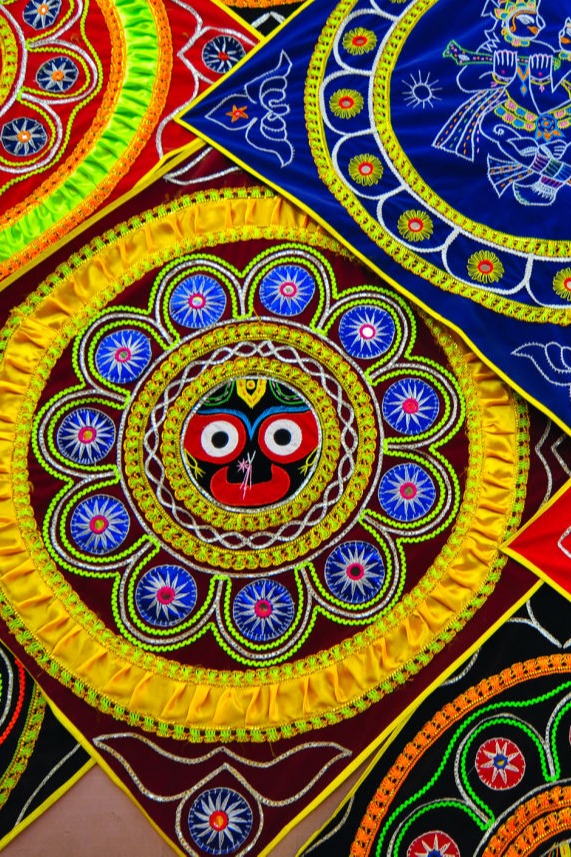
Today, drive to the textile weaving village of Nuapatana. Here master weavers produce silk and cotton saris, tapestry and bedspreads through Ikat technique. The art of tie dye weaving of Nuapatana is more than 800 years old and is linked with the temple of Lord Jagannath in Puri as the weavers from this village weave silk fabrics for the Lord Jagannath, Balabhadra and Goddess Subhadra for various religious occasions. Visit the weaver’s house and their workshop to learn about various stages of textile production and observe them at work. The Ikat weavers first tie the yarn according to the pattern and then dye them in great vats. The dyed yarn is then dried in the sun and finally woven on large hand operated looms. Continue on to Sadaiberini to watch Dhokra metal casting craft practiced by the “Situlias” tribes. Dhokra is an alloy of nickel, brass and zinc. Lost wax technique is used to cast beautiful designs of lamps, boxes, tribal figures and Gods and Goddess. Contemporary artisans of this craft also make other utility items like doorknob, door handle, ashtray, butter box, pen holder, candle and incense stick stand, photo frame, tissue box etc. Drive a short distance to Dhenkanal palace, the residence of the former Rajas of Dhenkanal principality. Enjoy a light refreshment in the palace before returning to Bhubaneshwar in the evening.

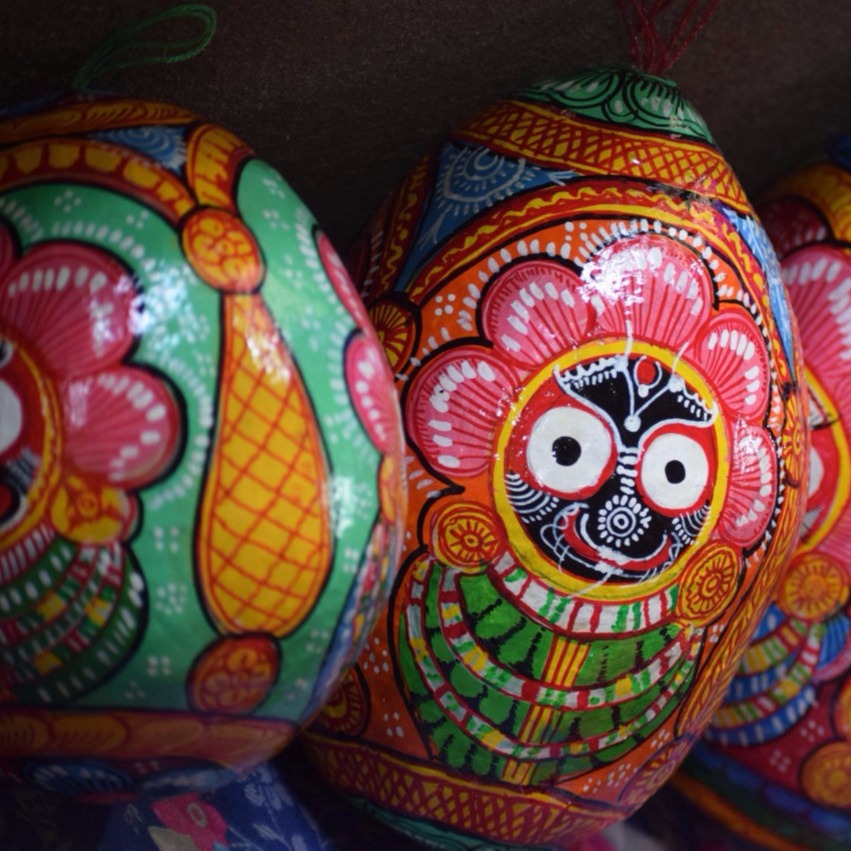
Depart Bhubaneswar and enjoy a spectacular drive to Phulbani, the entry point to the tribal highland of Odisha. The journey passes through dense forest and scattered tribal villages. The forests being mixed deciduous primarily have a rich growth of Sal trees. The place takes pride in its natural panoramic view – lush green woods, clusters of hills, tranquil surroundings with rich endowment of flora and fauna and above all the tribal societies living the area. The uniqueness of the area is truly retained by its tribal population who continue to lead a rustic lifestyle in the lap of nature. The tribal groups although have undertaken various odd jobs at present, yet their basis livelihood depends on hunting and cultivation. The tribal people carried out shifting cultivation taking into consideration that they were possessor of natural resources like river water, forest trees and lush green land. More than 62 different tribes descended from the original pre-Aryan inhabitants of the land live in Odisha. Many still inhibit hills and forests relatively untouched by outside influence. Arrive Phulbani and check-in to the hotel.
Hotel KP’s Salunki

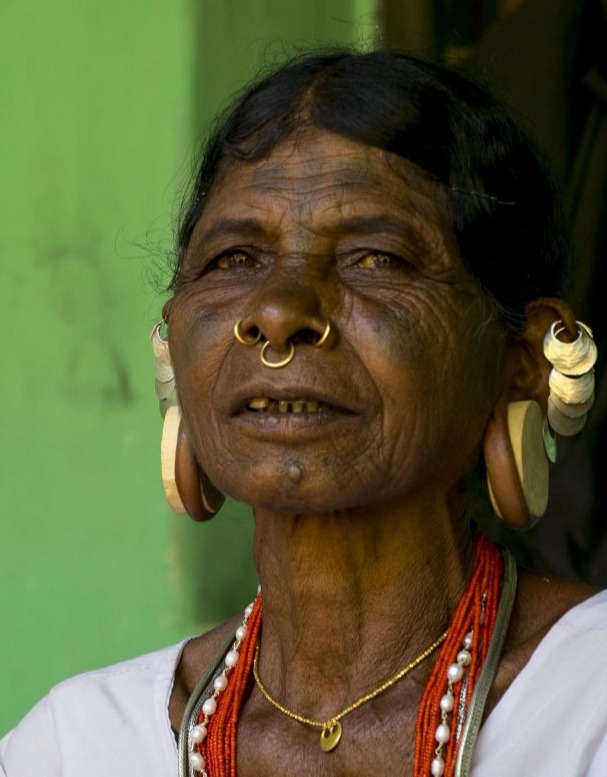
In the morning drive a short distance to Baliguda and Barajkhamba to explore the villages of primitive Kutia Kondh tribes. Kutia Kondh tribes form the largest group among 62 tribes of Odisha in numerical terms. Kondhs are an aboriginal tribe of India inhibiting in the state of Odisha and Andhra Pradesh. Their main divisions are Kutia or Hill Kondh and plain-dwelling Kondh also called Raj Kondh. They are hunter gatherer and go out for collective hunts eating the fruits and roots they collect. They cook their foods with oil extracted from Sal and Mahua seeds. These practices make them dependent on forest resources for survival. Their religion is animistic and their pantheon included eighty three gods. They were once infamous for their brutal acts of human sacrifice to achieve bumper crops. They live in hilly forests and friendly to outsiders. After visiting a few villages continue journey to Rayagada. En route visit Desia Kondh village. Arrive Rayagada and check-in to the hotel.
.
Image Credits: Subhashish Panigrahi
Hotel Sai International

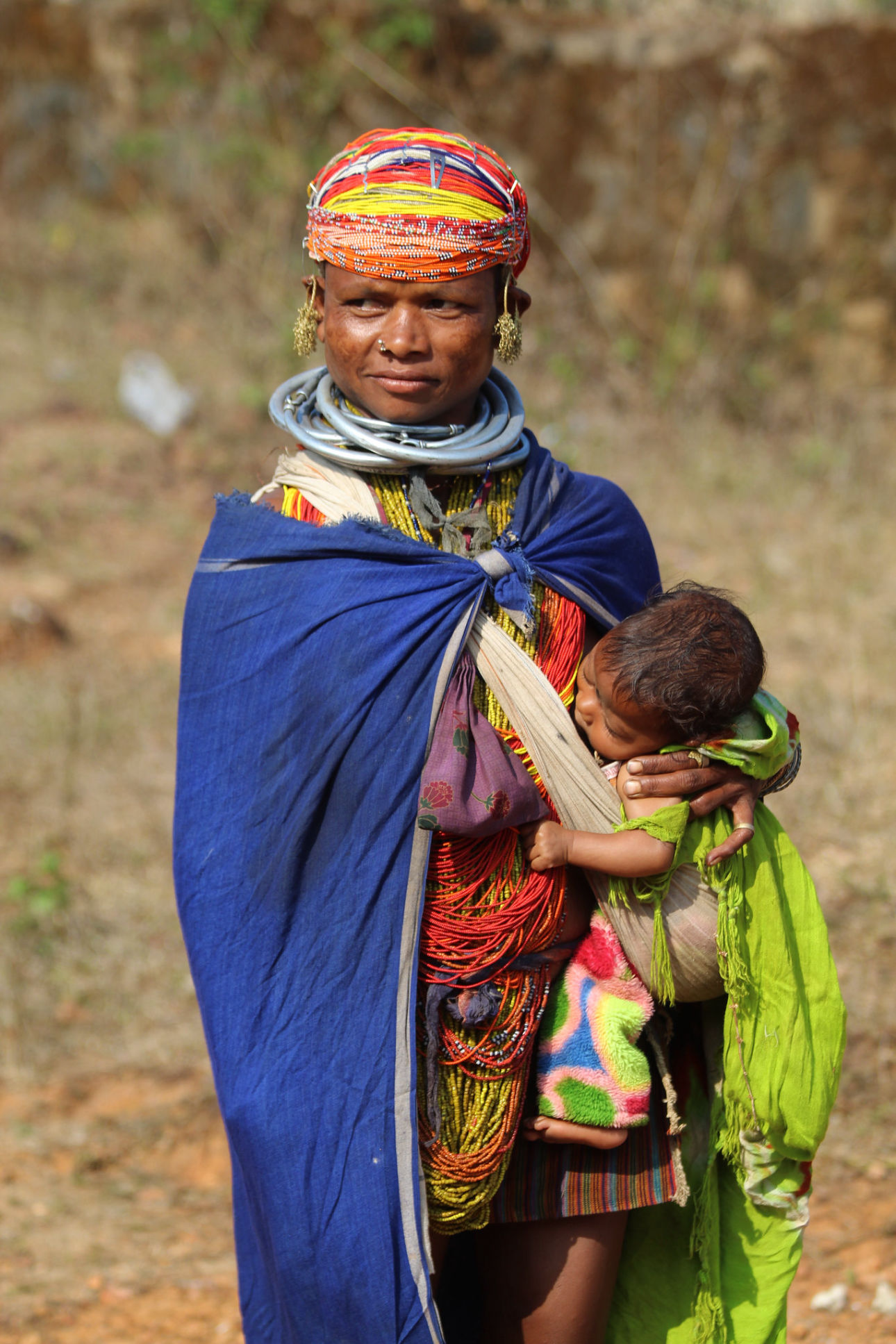
After breakfast proceed to Chatikona, a distance of 25 miles to witness the colorful weekly market of the Dongaria Kondh tribes. On this day the most interesting ornamental tribes come down from their mountain hamlets in the Niayamgiri hill ranges. It is a unique opportunity to witness these tribes as they mix with other communities in the marketplace. The Kondhs are a tribal group found in the hills and jungles of Odisha. The name Kondh also called Kandha translates as "mountaineer" and probably comes from the Dravidian word Konda meaning "hill". Scholars believe, the Kondhs are remnants of the pre-Dravidian aboriginal population of the subcontinent who have survived subsequent Dravidian and Aryan invasions because of their physical isolation. Kondhs build their villages on the slopes of valleys, overlooking their cultivated fields. At the center of the village is a cotton tree, planted by the priest and dedicated to the village. Houses or huts of the Kondhs are small, consisting mostly of one room, with the walls made of timber and plastered over with mud. The Kondh tribe has a number of sub-tribes like, the Dongria, Kovi, Kuttia, Languli, Penga, Jharia etc. Following this continue on to Jeypore. En route visit Desia Kondh and Jhria Paroja Kondh villages. Arrive Jeypore and check-in to the hotel.
Hotel Hello Jeypore

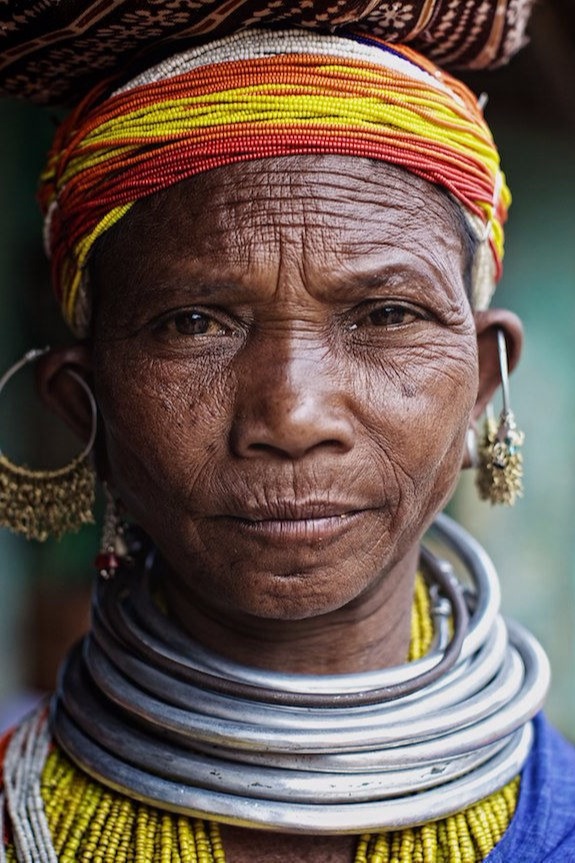
In the morning drive a distance of 50 miles to Onukadeli to witness the weekly market of the Bonda tribes. In the wild and remote mountainous country located towards the south-western tip of the Malkangiri highlands lives a unique tribe noted for its fiercely independent spirit. The tribesmen identify themselves a “Remo”. Their neighbors call them Bonda. The Bonda tribes represent a little changed primitive society with ancient tribal cultural characteristic. They speak a language of their own that belongs to the Austro-Asiatic language group having no script. Bonda men are brave and bold. They derive their identity from their arms such as bow and arrows, long knife which they always carry and sago palm wine which is their most favorite drink. Bonda women with their clean-shaven head decorated with head bands of palmyra strips and plaited fillets of caryota fiber stand out in sharp contract with women of other tribal group having long hairs arranged in attractive buns. Mass of colored beads and shell strings, brass neck rings and necklaces hanging down even below navel and the brass bangles covering the whole of the lower arms are the typical ornamentation of the Bonda women. A short narrow strip of striped loin-cloth woven at the home by a double-bar tensioned loom covering only private parts comprises women’s wear. Selection of spouses are left completely to the choice of the children in Bonda society. The main occupation of the Bonda tribe is agriculture and collection of forest produce. The barter system commonly known as 'Binnimoy Pratha', still exists in them. They exchange their agriculture produced materials for their daily use articles in the weekly market. Weekly markets are the best place to see them, observe their simple life and collect information about them easily. Return to Jeypore in the late afternoon.

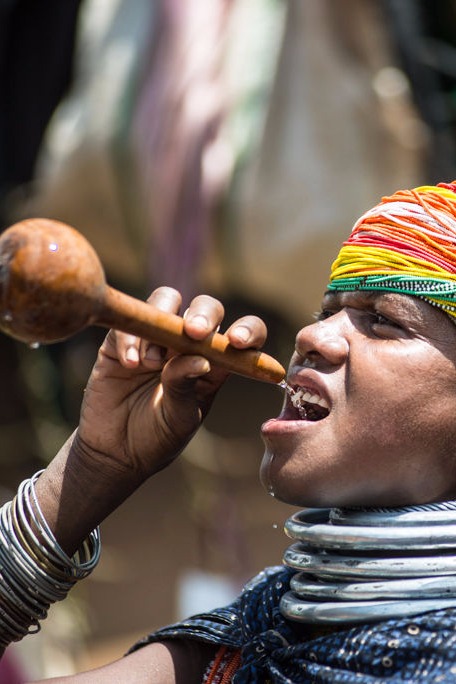
Today drive to Kotpad, a tribal textile village. The main street of Kotpad has workshops where the various stages of the production take place. Visit the weaver’s house and their workshop to learn about various stages of textile production and observe them at work. Emerging from the core of a primordial people, the simplicity, harmony and elegance of the tribal way of life has been captured and crafted in these rough-spun, nature-sprung fabrics which adorn the dark, bejewelled and lithesome woman. The fabrics of Kotpad are completely non-chemical and they are dyed with the reddish tinge of the roots of the Indian Madder (Aal) tree. It is eco-friendly, non-toxic and hence non-harmful to the skin. In fact, it is even said that the magic weaves of Koraput actually have a healing effect! The powerful and vibrant colors range from deep maroon to dark brown depending on the proportion of dye used and the addition of sulphate of iron. Later visit the colourful tribal market of the Rana tribal community. Return to Jeypore en route visiting Wild Silk forest of Nabrangpur.
Credits: Fotografia

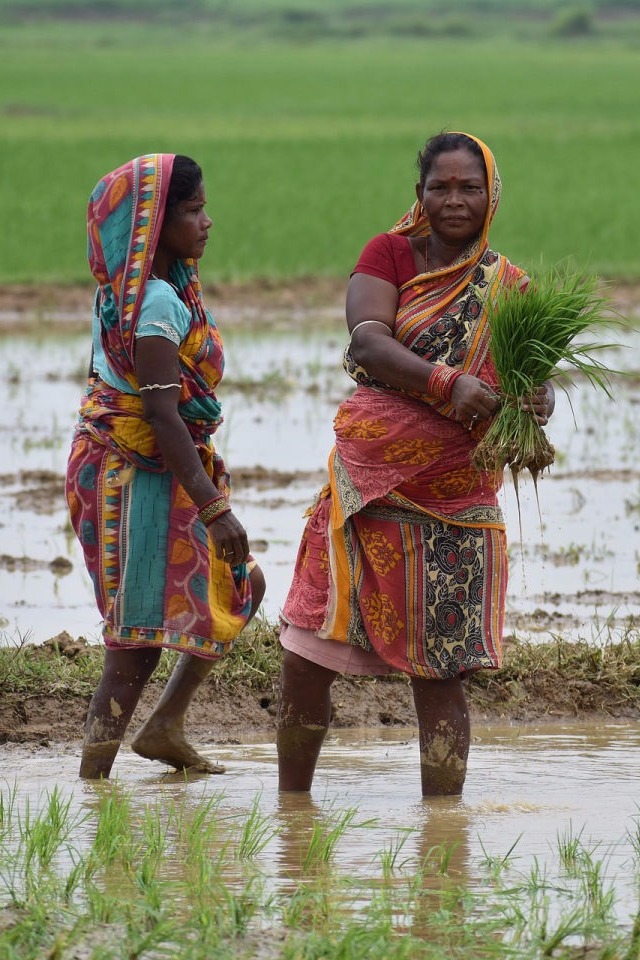
Depart Jeypore and drive to Nandapur to visit the villages of Sana Paroja tribes and enjoy a short trek in the lovely countryside. Now proceed to Lamtapur. The journey passes through dense forest and scattered tribal villages. En route visit the most interesting and ornamental Bada Paroja tribal village. The Parajas live in big and small settlements in the company of other communities. The Paraja villages lie in the plains, on the foothills and nearby forests in close proximity to hill streams. Inside the village there are two important places called Berna Munda and Nissani Munda. Berna Munda is the place comprising stone slabs where the village headman and leaders sit at dawn to discuss village affairs. Nissani Munda is the seat of the village deity called ‘Hundi Debta’. Dance, song and music are the characteristics of Paraja aesthetic life. Dhemsa dance, Khadumara dance, Dungdunga dance are some of the popular dance of the tribe. The male members use the musical instruments like Dhola, Tamaka, Dungdunga and Mahuri. They sing different types of song on various occasion. Their dance, music and songs are highly inspired by the beautiful elements of nature like the Sun, the Moon, the sky, the wind, the rain and the trees, streams, flowers, birds and animals. The Paraja tribe is divided into two groups namely Bada Paraja and Sana Paraja. At Lamtaput visit the biggest tribal weekly market of the Sana Paroja and Mali tribes. Continue your journey and arrive Rayagada in the evening.
Hotel Sai International
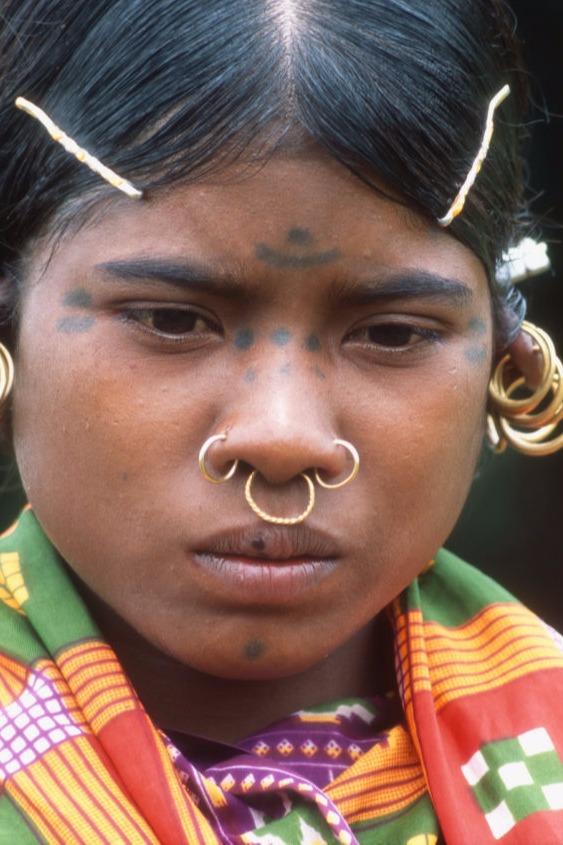
Depart Rayagada and drive through dense forest and scattered tribal villages to Gopalpur. En route visit Saora tribal villages. The “Saora” or “Savara” are a great ancient tribe. They are not only numerically important but also a historically and culturally significant tribal community of Odisha. They have been mentioned quite frequently in Hindu mythology. Especially in Orissa, they have been very intimately associated with the cult of Lord Jagannath, who according to a legendary tradition originated as a tribal deity and was later brought to Puri under royal patronage. They are distinguished by their characteristic style of dressing especially the long-ended loincloth of males about six feet long and about ten inches in breadth that hangs at the front and back-the rear end being longer than the front end. The traditional dress of a Saora woman is a waist cloth with grey borders which hardly reaches the knees. The Saora villages are found in the inaccessible interiors and in most cases lie hidden in the forests making it difficult to reach them. Their villages are generally small, the average size varying from 200 to 800 people. Close to the Saora settlements megaliths are erected to commemorate the dead kins. Two wooden posts, called Gasadasum or Kitungsum installed at the entrance of the settlement, represent the guardian deity of the village. Also visit Taptapani. Picturesquely located on a forested hill in the Eastern Ghats, it is renowned for its hot sulphur springs. The boiling sulphurous water bubbles out of a crevice in the hillside and is piped to a pool in a clearing. The other attractions of Taptapani are its tribal communities and the picturesque landscape. Continue on to Gopalpur and check-in to MAYFAIR Palm Beach Resort, Gopalpur-on-Sea.
MAYFAIR Palm Beach Resort, Gopalpur-on-Sea
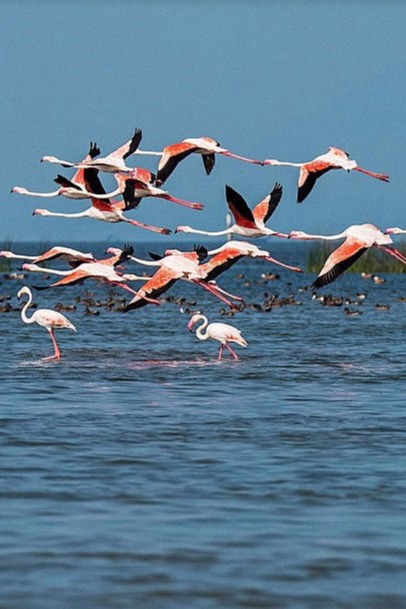
An ancient seaport for Odisha's maritime trade with Indonesia, the sleepy seaside town of Gopalpur is dotted with fishing villages, coconut and casuarinas groves. The morning is at leisure to enjoy the luxurious hospitality of MAYFAIR Palm Beach Resort. The Resort commands a heart-warming panoramic view of the sea from all corners of the property. Beautifully crafted dishes made from fresh and quality produce are presented in exquisite settings. Most of the seafood used like pomfret and mackerel are caught by local fishermen and there are fresh garden vegetables grown on the property itself. In the afternoon drive a short distance to Chilika, the largest brackish water lagoon in Asia. Chilika has a unique ecosystem with a range of aquatic flora and fauna and a rich biodiversity. Studded with small islands, the Chilika lake spreads across 1,100 sq km. It is separated from the Bay of Bengal by a sandy ridge and connected to sea through a narrow channel. Shallow and swampy part of Chilika attracts the largest concentration of migratory birds as white bellied sea eagles, greylag geese, purple moorhen, jacana, herons and flamingos are among the many species which make the lake a bird watcher's delight. Arrive Chilika and explore the unspoiled wetland of Mangalajodi village located on the northern banks of Chilika lake. The vast wetlands of Mangalajodi attract thousands of migratory birds, from different parts of the world. In the winter months it hosts more than 1.5 lakhs birds. Enjoy a private boat-ride through the wetlands along with a local guide and naturalist. Later drive 2 hours to Bhubaneswar airport in time for your homebound flight. Depart Bhubaneswar with colorful memories that will add untold pleasure to last for a lifetime.
